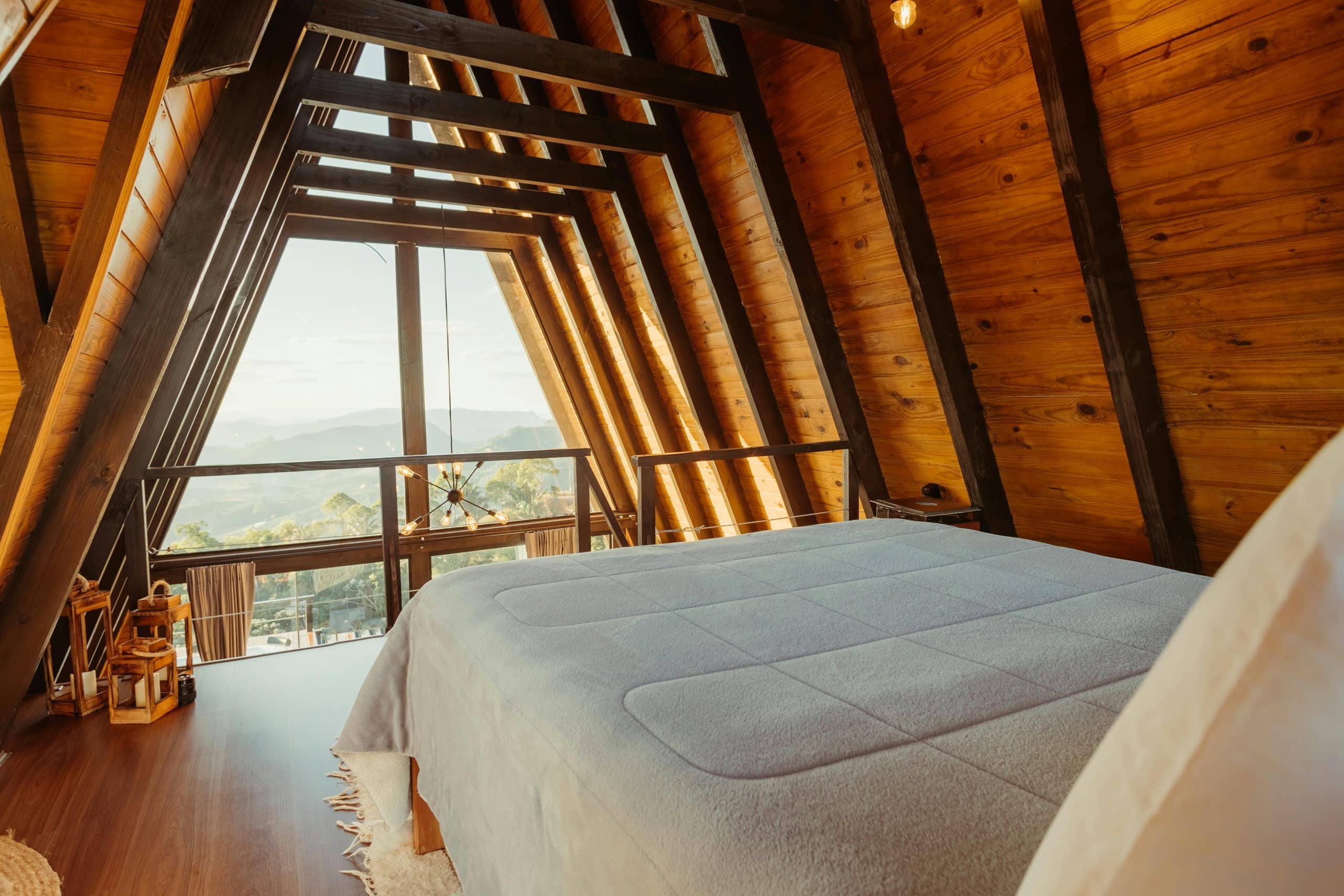How to Choose the Right Colors for a Calming Bedroom Atmosphere?

A bedroom, for most of us, is a sanctuary. It’s the place where we retreat to relax, unwind, and get a good night’s sleep. The design and feel of the bedroom have a significant impact on our mood and sleep quality. One of the most influential factors to consider is color. The colors that you use in your bedroom can drastically affect how relaxed and calm you feel. This article aims to guide you through the process of choosing calming bedroom colors and provide some design tips to create a serene and peaceful environment.
Understanding the Impact of Colors on Sleep
Color psychology is a well-researched field that examines how different colors impact our mood, behavior, and overall well-being. It’s essential to understand the impact of colors on sleep when deciding what hues to paint your bedroom walls.
A découvrir également : How to Set Up a Home Coffee Station with a Vintage Vibe?
Colors like green and blue are known for their calming effects. They emulate the colors of nature, promoting peace and tranquility. Green represents growth, renewal, and rest, while blue is associated with calmness, trust, and stability. Using these colors in your bedroom can help create a soothing atmosphere conducive to good sleep.
On the other hand, bright and bold colors like red and orange stimulate energy and excitement, which may not be ideal for a room meant for relaxation and sleep.
Sujet a lire : Tips for Creating an Eco-Friendly Roof Garden with Native Plants?
Best Calming Colors for Bedrooms
While personal preference always plays a part, some colors are generally considered better for creating a calming bedroom atmosphere.
Blue
Blue is often seen as the best color for bedrooms. This hue is said to lower heart rate and blood pressure, leading to a better night’s sleep. Lighter shades of blue like powder blue or sky blue can create a peaceful, airy feel, while darker shades like navy can add depth and richness to your room without sacrificing tranquility.
Green
Green, the color of nature, is another excellent choice for a calming bedroom. It can create a sense of balance and harmony, reducing anxiety and promoting better sleep. Soft shades of green like mint or sage can help to make your bedroom feel like a peaceful retreat.
Gray
Gray might not be the first color that springs to mind when you think of a calming bedroom, but it’s a versatile choice that can create a sophisticated, serene environment. A soft, light gray is a good choice for a minimalist, modern bedroom design.
White
White is a classic choice for bedrooms. It represents purity and simplicity, providing a clean and calming backdrop for other elements in the room. However, an all-white room can feel a bit sterile, so consider pairing it with other colors or incorporating texture and pattern to keep it warm and inviting.
Painting Tips for a Calming Bedroom
Once you’ve chosen your bedroom colors, it’s time to get painting. Here are some tips to help you maximize the calming effects of your chosen colors.
First, consider using lighter shades for your walls and ceiling. Light colors can make the room feel larger and more open, enhancing the calming effect.
Next, think about balance. Striking the right balance between your chosen color and other elements in the room is crucial. If your walls are a strong color, balance it with neutral furniture and bedding. Conversely, if your walls are neutral, consider adding pops of color with accent pillows, artwork, or a colored piece of furniture.
Finally, consider the finish of your paint. A flat or matte finish can be more calming and restful to the eye than a glossy finish.
Incorporating Color into Furniture and Decor
When designing a calming bedroom, don’t forget about the furniture and decor. These elements can also contribute to the overall color scheme and ambiance of the room.
Consider the color of your furniture. A dark wood bed frame could add warmth to a light gray room, while white furniture can complement a blue or green room beautifully.
Additionally, think about your bedding, curtains, rugs, and other decor. These can be excellent ways to introduce color without committing to painting the walls. For example, a white bedroom might benefit from blue or green bedding to add a calming touch, while a gray room might be brightened with white curtains or a light-colored rug.
In the end, creating a calming bedroom atmosphere is all about choosing the right colors and using them wisely. So take your time, consider your options, and start transforming your bedroom into a serene and peaceful haven.
Understanding the Impact of Paint Colors and Light
Understanding the impact of paint colors and the role of light in your bedroom can significantly affect your sleep pattern. According to research published by nlm nih and ncbi nlm on pubmed ncbi, there’s a strong correlation between the color and light in your bedroom and the quality of sleep you get. It’s beneficial to understand this correlation to create a calming bedroom atmosphere.
Light plays a crucial role in color perception. The way a color appears can significantly change depending on the light source. For instance, a blue-green color may appear more green under natural light and more blue under artificial light. Therefore, considering the source and amount of light in your bedroom is crucial when choosing a bedroom color. You might want to take into consideration where the windows are located, the size of the windows, and the type of artificial lights you use.
Furthermore, colors also have an impact on the perception of space. Lighter colors make a room appear larger and more open, while darker colors can make a space feel smaller and cozier. If your bedroom is small, you might want to go for lighter shades to create the illusion of a larger space.
When choosing paint colors, it’s essential not to rush the process. Test paint swatches under different lighting conditions and observe how they change throughout the day. This will give you a better understanding of how the color will look in your room and help you create a soothing and calming atmosphere in your bedroom.
The Role of Interior Design in Creating a Calming Bedroom
Interior design plays an integral role in creating a calming bedroom environment. It involves more than just choosing the right bedroom colors; it’s about creating a cohesive look that promotes relaxation and tranquility.
Start by identifying the style you want for your bedroom. Do you prefer a minimalist, modern look? Or maybe you’re drawn to a more traditional, cozy style? Once you’ve identified your preferred style, you can start choosing paint colors, furniture, and decor that align with that style.
One interior design concept to consider is the 60-30-10 rule. This rule suggests that 60% of the room should be a dominant color, 30% a secondary color, and 10% an accent color. This will create a balanced look that is visually appealing.
The layout of your bedroom is also important in creating a calming atmosphere. A clutter-free room can help reduce stress and promote relaxation. Consider incorporating organization solutions such as built-in shelving or storage beds to keep your room tidy.
Remember, your bedroom is a personal space. It should reflect your taste and preferences. Don’t be afraid to incorporate personal touches, such as family photos or artwork that you love.
Conclusion
Creating a calming bedroom atmosphere is more than just about picking colors. It involves understanding the psychology of colors, considering the impact of light, and incorporating principles of interior design. By taking the time to carefully select paint colors, furniture, and decor, you can transform your bedroom into a peaceful sanctuary conducive to relaxation and sleep. Keep in mind the influence of colors bedroom, the work wellness of your space, and the atmosphere bedroom you aim to achieve. Lastly, remember that your bedroom is a reflection of your personality. So choose colors and design elements that resonate with you and make the space truly yours. Happy decorating!
